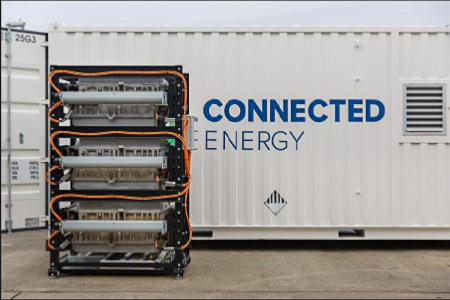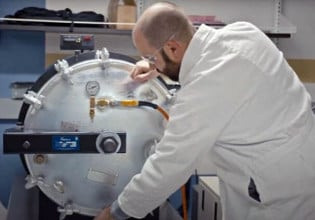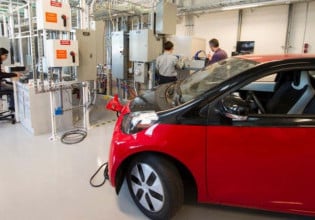Connected Energy Secures £15 Million in Funding to Scale Up Operations
Connected Energy receives funding to continue the development of its second-life electric vehicle battery technology and business expansion.
Connected Energy Ltd (CE) is a developer of industrial-scale energy storage systems. The company’s E-STOR technology was developed to allow low-cost second-life electric vehicle (EV) batteries to be used as commercially viable stationary energy storage systems.
With a view to a circular battery economy in mind, CE is continuing to work with support from investors and further develop its partnerships with EV manufacturers, energy utilities, and battery recyclers. In mid-June, the company announced its win of £15 million in funding from five new investors. A portion of the funding will be used to scale up CE’s operations and move into utility-scale project development. The company also intends to use funds to further develop its business to accommodate reusing second-life batteries.

Image used courtesy of CE
The EV Battery Market
According to an analysis of global EV markets by McKinsey, sales of EVs have slowed down in pace. In contrast to the impressive 65% rise in EV sales from 2017 to 2018, the year 2019 only saw a marginal rise in sales from 2.1 to 2.3 million. McKinsey reported a decline in sales of 25% in the first quarter of 2020. Despite this, Europe has seen a substantial rise in sales compared to other regions such as China and the U.S. In 2019, EV sales in Europe rose by 44%.
According to McKinsey, battery cell manufacturers are gearing up production to meet demand, with a particular focus on meeting the demand for Central Europe.
EV Batteries: Replace or Reuse?
Electric vehicle battery packs that have reached the end of their life can be processed in three different ways:
- Battery packs can be disposed of if damaged or where the infrastructure to recycle and refurbish them is not in place
- Rare-Earth materials can be extracted from battery packs and reused
- Battery packs can be recycled for second-life applications
According to CE, a second-life battery energy storage system (BESS) can save an additional 450 tonnes per MWh of carbon dioxide (CO2) equivalent compared to using first-life lithium-ion batteries (LiBs). For companies looking to achieve their net-zero goals, no wonder this seems an attractive prospect.
Power systems engineers can use second-life EV battery-based storage systems to store renewable energy when in excess supply. The stored energy can be released when demand is high. In this way, the storage systems can be used to maintain the supply of power to devices and machinery within manufacturing or electric utility facilities. Using second-life EV battery-based storage systems can also help grid operators to stabilize the power grid, as well as improve the flexibility of power use and distribution.
A backup second-life storage system can not only reduce emissions, relieve supply chain constraints, and avoid disruptions, but also generate new revenue strains for automakers, and help them achieve their sustainability goals.
Investors
Caterpillar Venture Capital Inc. (CVCI), the Hinduja Group, Mercuria, OurCrowd, and Volvo Energy stand united among existing investors (Engie New Ventures, Macquarie, and the Low Carbon Innovation Fund) in the provision of the £15 million to support CE’s business plans.

Image used courtesy of CE
In a recent news release, the CEO of Connected Energy, Matthew Lumsden, commented, “We couldn’t be more pleased to welcome our new investors on board and look forward to forging a path to increasing the sustainability of both electric vehicles and grid-connected energy storage. I’d also like to thank our fantastic team at Connected Energy whose continuing hard work and commitment is acknowledged by this investment.”
Connected Energy and its investors appear aligned in their strategic business goals and desire for a sustainable future.
In the same news release, the Senior Investment Manager at CVCI, Jihad Salahuddin, said, “Connected Energy’s technology to repurpose EV batteries has demonstrated strong promise in terms of its current performance and upside capabilities. We are excited about this investment and see it as an important element of our strategic roadmap in the battery circular economy and our long-standing Enterprise commitment to sustainability.”






